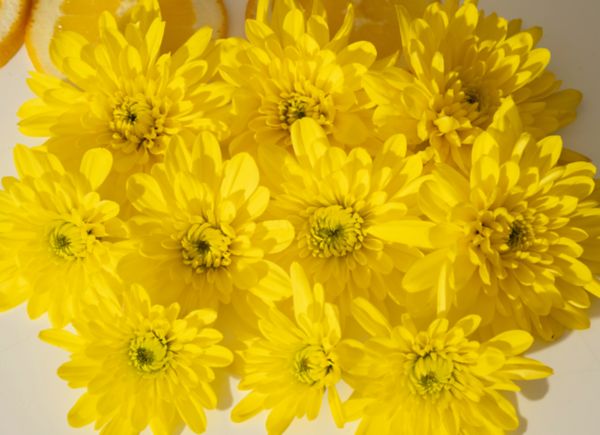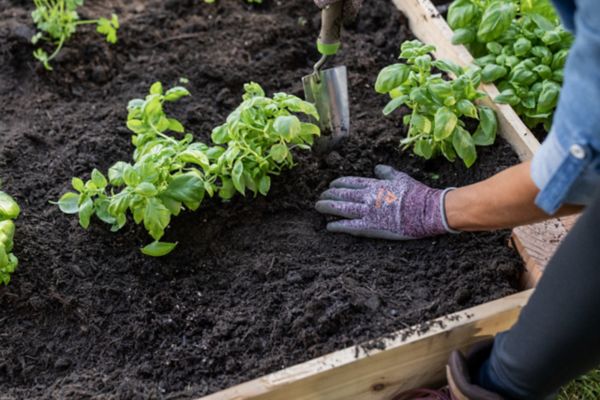How to Grow Roses
Authored by Leah Chester-Davis
Roses are a readily recognizable flower even though there are numerous types and cultivars.
Roses claim a sentimental spot for many. They often mark special occasions and find their rightful place in bouquets and hearts. Roses are a readily recognizable flower even though there are numerous types and cultivars. Some types, such as shrub roses and what are often referred to as old garden roses, are easy to grow with little care and attention needed and are quite fragrant. Others, such as the hybrid tea roses, sometimes called modern roses, are more high maintenance, though there are some such as the grandifloras and floribundas that are easier to care for. No matter which rose you prefer, growing them can be a way to bring fragrance, beauty and grace to your garden.
About rose
| Botanical name: | Rosa |
| Common name: | Rose |
| Plant type: | Perennial shrub |
| Size: | 8 inches (miniature); 4 to 6 feet (hybrid teas); to 15 feet (climbing) |
| Sun exposure: | Full sun |
| Soil type: | Fertile with plenty of organic matter |
| Soil pH: | 5.5 to 6.5 |
| Hardiness zones: | 3 to 11, depending on cultivar |
| Average first frost: | Varies by region |
| Average last frost: | Varies by region |
| Container friendly: | Yes, miniature and polyantha types |
| Beginner friendly: | Yes |
Growing
Roses thrive in full sun, at least six to eight hours a day. Morning sun is particularly important to dry the leaves and help reduce incidence of disease. Afternoon shade can be beneficial.
Amend the soil with plenty of organic matter so that it is loose and drains well. Roses typically last for many years so it pays to invest time and energy in working the soil, tilling it to a depth of about 12 inches. A soil test (kits available at most county Extension centers) will provide recommendations on amendments that may be needed, also important considering the potential long life of this plant.
Roses need an area with good air circulation, which can help reduce problems with foliar diseases.
When purchasing roses, look for good quality plants from reputable sources, either a local garden center or online. They may be sold in bare-root form or in containers of varying sizes. Avoid those that appear to have any disease problems.
Types of roses
The American Rose Society lists nearly 50 classifications for roses. When considering roses for your garden, here are a few that you will likely come across.
Hybrid Teas
Popular for their elegant, large flowers borne singly or in small clusters on a long stem. They are a popular cut flower.
Polyantha
Polyantha roses exhibit lovely bloom clusters, typically on small to medium-sized shrubs. They are generally hardy growers with good resistance to pests and diseases.
Floribunda
A cross between the hybrid tea and the polyantha; the result is stunning blooms that are similar to but smaller than the hybrid teas. They grow on low-growing, densely branched bushes. They are prolific bloomers. They require less maintenance than hybrid teas and are more disease resistant.
Grandiflora
Grandiflora roses are the result of crossing hybrid tea and floribunda types. They have beautiful blooms like the hybrid teas but grow in clusters. They typically bloom repeatedly through the season. They grow quite large, as tall as six feet. They are disease resistant and hardy.
Climbing roses
Climbers send out long shoots or canes that can be trained to climb and drape over fences, arbors, trellises, or other structures. They boast quite a variety of bloom sizes, some as large as hybrid teas, and others with small blooms in clusters.
Miniature roses
Miniatures range from 3 to 12 inches with small buds, flowers, foliage, and stems. The bloom shape resembles some of the hybrid teas. Often sold as potted plants, they can be planted in the landscape as well.
Shrub roses
Shrub roses are quite vigorous and popular in the landscape. They are easy to grow, an excellent choice for those who want to spend more time relishing their garden’s beauty than maintaining it.
The American Rose Society lists nearly 50 classifications for roses.
Planting
The time to plant roses is typically the spring or the fall, but this may vary depending on your location. Check with your local garden center or county Extension office for recommendations for your area.
Plant your roses in well-prepared garden beds. When purchasing bare-root roses, make sure they have not dried out. Before planting bare-root roses, Alabama Extension recommends removing the wrappings and placing the roots in a bucket of warm water for up to 24 hours before planting to help the plant begin taking up water.
If planting an individual plant, dig a large hole, a least 12 inches deep and 18 inches wide, so the roots can have room to spread out. Work the soil you have removed by making sure it is loose and crumbly and mix with aged manure or compost. Mix about two to three parts ground or native soil with one part organic matter such as the aged manure or compost. Place some of the soil mixture into the hole, add the plant and cover the roots with the rest of the mixture. Make sure the rose sits slightly higher in the hole than ground level. Tamp the soil down gently and water thoroughly.
If planting more than one plant, space at least 3 feet apart to allow for good air circulation.
After planting, apply a 3-inch layer of mulch around the area to help suppress weeds and maintain even moisture levels. Avoid piling the mulch against the stem or the base of the plant.
Roses will need to be watered weekly. Avoid getting the foliage wet by watering at the base of the plant or using drip irrigation or soaker hoses. If using overhead watering, do so early in the day so the foliage has time to dry before nightfall. Roses will need about an inch of water each week. New plantings, particularly when the weather warms, may need more. Established plants may need more during periods of heat stress or drought.
Roses require pruning to keep them in their best shape. It also promotes healthy growth. The best time to prune is typically in early spring after the last frost, but this will depend on your location. Remove any dead or damaged growth. For roses such as hybrid teas, grandifloras and floribundas, Missouri Extension recommends early spring when the buds begin to swell. For most climbing roses, prune in late spring immediately after flowering. For the everblooming climbers prune as the buds are breaking at the end of the dormant period.
Fertilizing
Roses are an investment in your landscape with payoffs in terms of years of enjoyment. The best way to determine fertilizer needs is to have a soil test done before planting. The results will give you recommendations.
- Roses are known as heavy feeders, meaning they will need fertilizer applications on a regular basis. Missouri Extension provides these recommendations: apply after danger of frost has passed, then make an additional application every six weeks. Do not fertilize after July.
- Use either synthetic or organic fertilizers. Follow label directions. Synthetic or inorganic fertilizer that is higher in phosphorous is recommended. Use a 5-10-5 or a 4-12-4, or a similar analysis. If not available, use an 8-8-8 or 12-12-12. Use about 3 pounds per 100 square feet or 1 heaping tablespoon per plant. Spread the fertilizer evenly around the plants and lightly work it into the soil. Water the plant after applying.
- If using organic fertilizers, such as manure, work it into the soil 2 to 3 inches. Fish emulsion is another organic fertilizer; follow label directions. If using bone meal, apply about 1 heaping tablespoon per plant. If using blood meal, apply a level tablespoon around plants.
Controlling Pests, Diseases, and Other Problems
Roses are susceptible to several pests and diseases. Among them are aphids, various caterpillars, spider mites, and thrips. Beneficial insects such as lacewings can help reduce problems with thrips. Insecticidal soap can be used and should be directed to problem spots, particularly on the undersides of leaves.
- Black spot, crown gall, powdery mildew, rose rosette disease (RRD), and stem canker and cane blight can be issues. Fungicides can be used for most of them, expect for crown gall and RRD. Crown gall looks like spherical, woody growths with rough surfaces. It is best to remove diseased plants. RRD looks like red witches broom-like growth, which will have the appearance of several twigs or small branches growing from a central point. It is also characterized by flattened canes, a proliferation of thorns, and blighted leaves. If the rose has this problem, it needs to be discarded. Be careful in your diagnosis, however, new growth can have a red appearance. If new growth does not quickly turn to green, it may very well be RDD.
- Nematodes can be an issue. Select plants that are resistant to them.
Roses are known as heavy feeders, meaning they will need fertilizer applications on a regular basis. Missouri Extension provides these recommendations: apply after danger of frost has passed, then make an additional application every six weeks. Do not fertilize after July.
Harvesting
- It is tempting to cut flowers on new plants but it’s best to wait until fall to give them a chance to become well established.
- When cutting roses for bouquets, avoid cutting the entire stem. Instead, leave at least two, five-leaflet branches to remain on each shoot or stem.
- Use sharp, clean garden pruners when cutting or pruning roses, remove extra foliage, and immediately place rose stems in water. Recut stems every three days and change the water.
Expert Tips
- When purchasing roses, keep track of the cultivar name. This is useful information when seeking further guidelines on best time to prune.
- Look for roses that are disease resistant.
- Learn from the experts. The American Rose Society has several how-to videos with more in-depth information on rose care, including pruning.
Frequently asked questions
How can I find out the best varieties of roses to grow in my region?
The American Rose Society has local chapters across the country that are good sources of information. Other good sources are your local garden center, your county Extension center, or Master Gardener group.
What is the best way to protect my roses during winter?
In the late fall, Nebraska Extension recommends mounding 8 inches of well-drained soil around the base. After mounding, moisten the soil mound. After the soil is frozen, apply coarse mulch. Another step for particularly cold climates is to place a ring of chicken wire around the rose and fill the ring with aged sawdust or wood chips.





